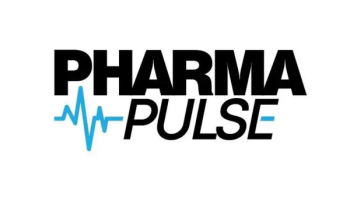
Lessons From Shortages and Global Disruptions
In the fifth part of her Pharma Commerce video interview, Heather Zenk, Cencora’s president of US supply chain, explores how public-private collaboration, smarter sourcing strategies, and long-term manufacturer support are helping to fortify pharmaceutical supply chains against future crises.
In a video interview with Pharma Commerce, Heather Zenk, Cencora’s president of US supply chain, describes how today's distribution networks must seamlessly connect manufacturers to care sites that range from large academic centers to rural pharmacies and physician offices. This “last mile” delivery is essential because, as Zenk notes, “all healthcare is local.” Patients want access to advanced therapies close to home, and distributors play a critical role in making that happen.
A major focus in this effort is maintaining product integrity, especially for cold chain items that must be stored between 2–8°C. Innovations in cold chain management now go beyond temperature tracking; they include predictive maintenance of infrastructure such as freezers and compressors. Distributors not only monitor product temperature but also evaluate the performance and potential failure risks of the equipment that manages the cold chain environment.
Zenk emphasizes the importance of marrying manufacturer data with real-time logistics. For example, if a care site accidentally stores a cold chain product outside the optimal range for a short period, data from the manufacturer can often confirm whether the product remains viable. This responsiveness supports safe patient care and reduces waste.
Another important innovation is the use of reusable cold chain totes, which service over 90% of the US market. These require robust freezing systems and operational oversight to ensure readiness and reliability. Zenk underscores that preventing failure, rather than simply reacting to it, is the next frontier in pharmaceutical distribution. By using data-driven insights and predictive engineering, the distribution process becomes more resilient, ensuring that patients can access vital therapies without delay or compromise.
She also comments on the advanced technologies that are proving most effective in enhancing real-time visibility and operational efficiency; strategies organizations should prioritize to ensure compliance while minimizing disruptions for manufacturers and providers as the DSCSA compliance date approaches; lessons learned from recent drug shortages and global disruptions; the practical steps that can be taken in transportation, packaging, and warehousing to meet sustainability goals without compromising reliability or cost-effectiveness; and much more.
A transcript of her conversation with PC can be found below.
PC: What lessons have been learned from recent drug shortages and global disruptions, and how are supply chain leaders building resiliency to prevent future challenges?
Zenk: The process there is to get others in the boat with you. How do we leverage public- private partnerships? How do we make sure we understand our public policies driving the way the marketplace is reacting to product availability, or are there public policies that are hindering a manufacturer's ability to bring product to market?
Then, also looking at using technology and data to make a finished pharmaceutical. You may have 100 components that go into that—if not more—and it can be anything from an active pharmaceutical ingredient to an excipient, to a key starting material, to something as simple as the cotton swab that goes inside the bottle, and the manufacturer to track all of those materials that go into the finished good is what they do. That's why they're a manufacturer. We said, how can we help identify, if we're selected with a partner that has that start to happen, how do we go further up the supply chain?
If key starting material is in a war-torn country or in geopolitical unrest, is there another manufacturer that has less risk in that space that we could be able to procure product on behalf of our customers or on behalf of their patients, and allow the manufacturer some time that might have a material or product that's in a geopolitical unrest to think of a different way to source their product?
We also want to continue to support manufacturers. We don't want to switch so quickly between manufacturer number one and manufacturer number two that there isn't good, stable supply chain coming out of it on the other side. We're really looking at, how do we give extended contracting in the business space so they have committed inventory, committed volume, so that manufacturer can plan better. But the also think about, how do we collaborate differently with them to give them some support, but allow them time to find a different way to source it, still having product available for the marketplace, and allowing that to happen.
The supply chain is very complex. Business drives decisions. Product availability drives decisions. When humans get involved, relationships drive some decisions. How do we optimize all of those things together to make sure that we've got enough product available to support patients in the US and globally?
Newsletter
Stay ahead in the life sciences industry with Pharmaceutical Commerce, the latest news, trends, and strategies in drug distribution, commercialization, and market access.





